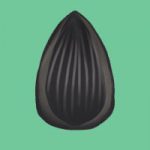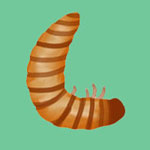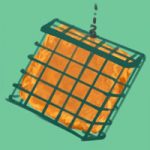Create a Birdfeeder Buffet
Winter is here – and with limited wild food sources, those backyard birds have a serious appetite. Just like us, birds have their own taste preferences. Here’s our breakdown what food to fill in your feeders to help fit the bill:
Sunflower Seed
 Attracts: Most species
Attracts: Most species
In a Nutshell: If you have to invest in one type of backyard seed type, go for this one. Studies have consistently shown that sunflower seeds (both black-oil and striped) attract the greatest variety of birds.
Quick Tip: Be prepared to clean under the feeders occasionally from discarded shell husks, or buy waste-free mixes pre-shelled to avoid the fuss.
Mealworms
 Attracts: Carolina Wren, Eastern Bluebird, American Robin, Tufted Titmouse & Black-capped Chickadee
Attracts: Carolina Wren, Eastern Bluebird, American Robin, Tufted Titmouse & Black-capped Chickadee
In a Nutshell: If your feeder activity is lacking, spice things up by adding mealworms! Insectivores—such as robins, bluebirds, and chickadees—LOVE these creepy-crawly snacks, and will quickly devour every morsel they can get their beaks on.
Quick Tip: Wriggling worms may give you the willies, but by providing live ones, you’ll bring birds to your feeders like a magnet. The movement of the worms will quickly attract their attention. Visit a pet or specialty bird feed store for fresh worms to create a true feeding frenzy at your feeders!
Suet
 Attracts: Woodpeckers, Carolina Wren, & Blue Jays
Attracts: Woodpeckers, Carolina Wren, & Blue Jays
In a Nutshell: Made from beef fat and rich in protein, suet is a fantastic food source to give birds a quick energy boost during the colder months. Suet is a particular favorite of woodpeckers, but other birds will readily eat it, especially on harsh winter days where they need that extra protein boost.
Quick Tip: To attract larger woodpeckers, like Pileated and Flickers, consider using a suet feeder that includes a tail prop. This feature helps these big birds keep their balance as they eat by bracing the feeder with their tails.
Thistle/Nyjer Seed
 Attracts: American Goldfinch, House Finch, Dark-eyed Junco, Pine Siskin & Common Redpoll
Attracts: American Goldfinch, House Finch, Dark-eyed Junco, Pine Siskin & Common Redpoll
In a Nutshell: Known by many names, including “thistle”,” nyger”, “nyjer” and “nijer”, this tiny seed native to Ethiopia is a favorite for finches, that can easily pluck these seeds from feeders using their thin, tweezer-like bills. Dark-eyed Juncos also love these oil-rich treats and often congregate under thistle feeders to snatch up any fallen morsels.
Quick Tip: Be sure to keep your thistle feeders well-stocked this winter—according to the 2018-2019 Winter Finch Forecast, this looks to be a great year for seeing finches in high numbers at your feeders. If you’re really lucky, you might even attract a few rarities, like Common Redpoll and Evening Grosbeak!
Millet Seed
 Attracts: Dark-eyed Junco, Mourning Dove, Northern Cardinal, Wild Turkey & Sparrows
Attracts: Dark-eyed Junco, Mourning Dove, Northern Cardinal, Wild Turkey & Sparrows
In a Nutshell: Millet is a tiny round grain favored by ground-feeding birds, such as sparrows and doves. There are several varieties, including golden, red, or white, and are typically sold as part of a birdseed mix.
Quick Tip: Since millet tends to spoil quicker than other seeds, disperse on the ground or use a flat hopper-style feeder for a short period only.
Love watching the birds? Help us make every bird count on January 5th at our annual Christmas Bird Count!



